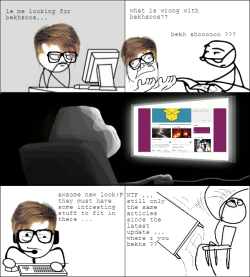Divine Offense: Chaza Charafeddine’s “Divine Comedy” And Why
1,004 viewsOn April 7th we attended an artist talk by Lebanese artist, Chaza Charafeddine, as part of a symposium on sexuality hosted by the Goethe Institute and AUB. Her talk focused on work from her recent series “Divine Comedy,” featuring photos of trans women, drag queens and cross-dressing gay men incorporated into a series of canonical South Asian and Middle Eastern prints and artworks. Although the work initially appeared promising the artist’s talk triggered a series of rage-inducing tropes, and turned out to be one of the most frustrating art events we have ever attended.
The first sign that the talk was taking a turn for the worst was the consistent refusal of the artist to use the proper pronouns of the people she photographed. She repeatedly referred to her subjects using male pronouns, even after noting that many of her subjects were transsexuals. Despite her assertion that she spent hours with her subjects, talking with them and getting to know them better, she clearly lacked actual respect for her model’s rights to self-identify. Added to this disappointing failure was her repeated use of the word “confusion” in referring to what she explained was a discrepancy between her subjects’ biological sex and their gender identities. By interpreting the non-normative gender of trans women as a confusion rather than constitutive of gender,[1] she essentially called her subjects fascinating freaks.
This brings us to our next concern, which was the artists’ overall failure to accept her political and ethical responsibility in producing artwork, especially work that is profoundly political in nature in the context of Beirut – where gender and sexuality are being taken up politically on a daily basis. Charafeddine chose transsexual and cross-dressing subjects explicitly for this project out of a sense of “fascination with the unusual beauty between male and female;” even her selection of works was chosen purely aesthetically, without any consideration for the implications of such choices. At one point a member of the audience, Viola Shafik, a freelance filmmaker and scholar, intervened and informed the artist that one of the photos she used was actually a colonial Orientalist photo, circulated in the West as a postcard.
Regardless of these important interventions, Charafeddine refused to be accountable to the critiques launched by the audience – who had just spent the last two days discussing sexuality only to have such conversations appear meaningless in the realm of culture. Instead of taking these criticisms thoughtfully and reflectively, the artist used the language of neutral aesthetics, taste, and personal opinion to distance herself from any kind of accountability in her work, or any critical thoughtfulness.
During the Q&A, the audience was up in arms. Many young activists and intellectuals expressed frustrating during the Q&A, and numerous people spoke up and attempted to both interrupt the violence being enacted in the artist’s talk, as well as offer an educational moment in pushing the artist to think more critically. Sadly the artist was not open to this intervention.
So here is our suggestion to artists working on gender and sexuality (or any topic really):
1) Respect the subjects of your work and the language they use to describe themselves and refer to themselves. (i.e. don’t refer to trans women as “he” or say they are confused)
2) Think about your work beyond just what is aesthetically appealing to you. What values are underlying your work, what ideas are you putting forward to your audience and how are you being accountable to the people affected by your work? (i.e. trans and queer people, women, anyone concerned with gender and stereotypes, is affected by this kind of work)
3) Be a little smart – if you’re going to produce art, at least try to learn a little about cultural criticism or the politics of the topic you’re producing on.
4) Take criticism seriously. If you’re going to produce cultural work, you need to be responsive to the public you’re making your intervention into. Taking criticism seriously doesn’t mean you just abandon your project anytime someone critiques your work, but it does mean that you should think carefully about what those critiques are and how they will impact your work.
5) When in doubt about the political and social implications of your work, just say so! It can be really interesting for an artist to discuss the complicated and confusing parts of their work with the public.
[1] Gender and sex are actually diverse and complicated – not binary or unchanging. Gender and sex are both understood in different ways across history and cultures.
Contributed by Nat.
To view Chaza Charafeddine’s “Divine Comedy,” please visit the series’ page at Agial Art Gallery.





Leave a Reply